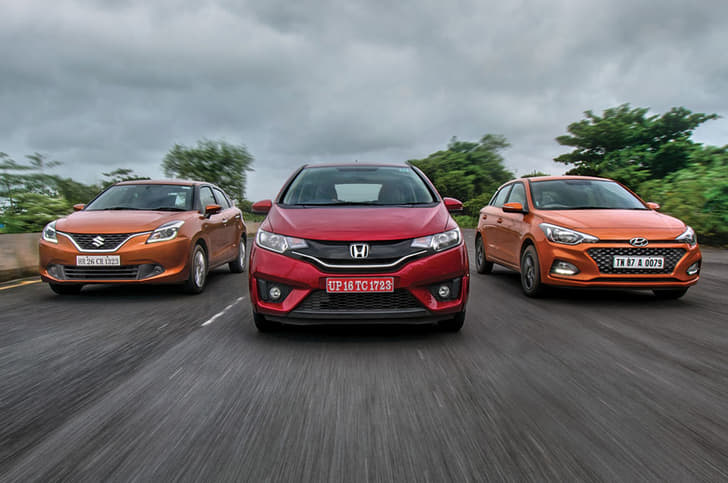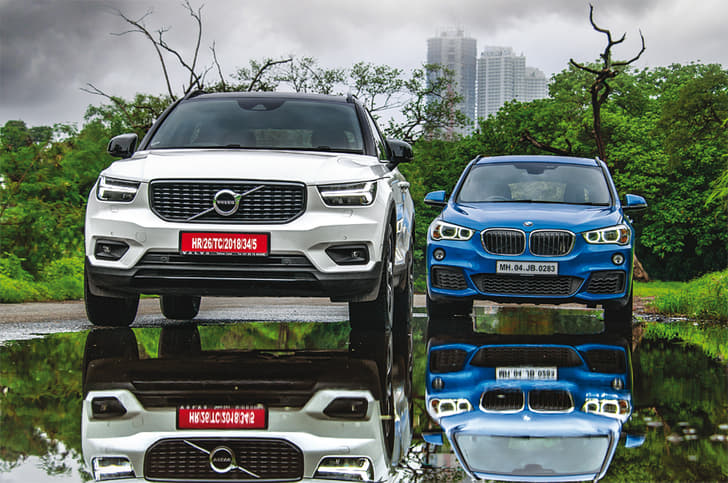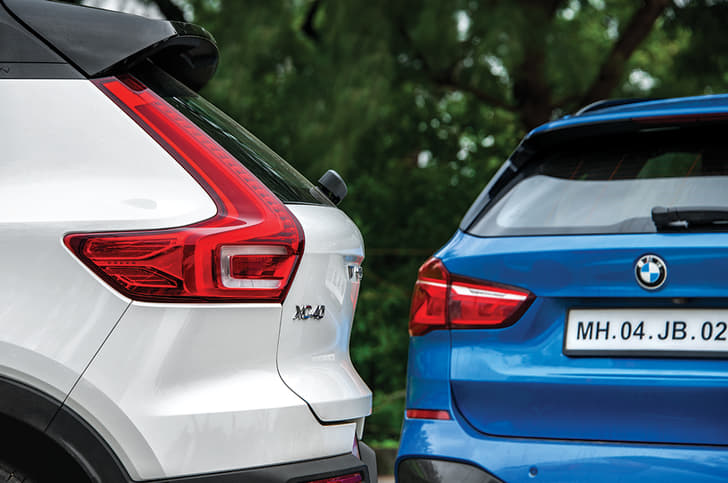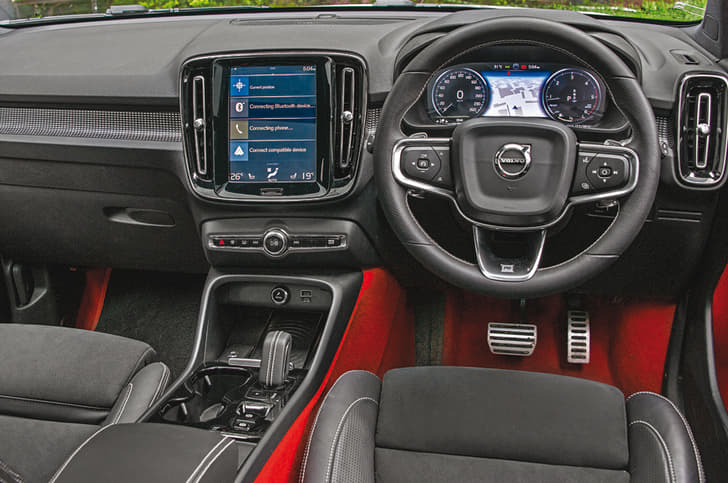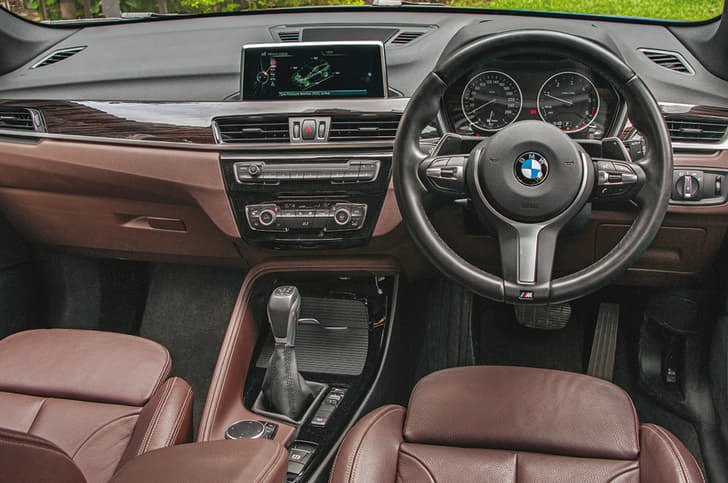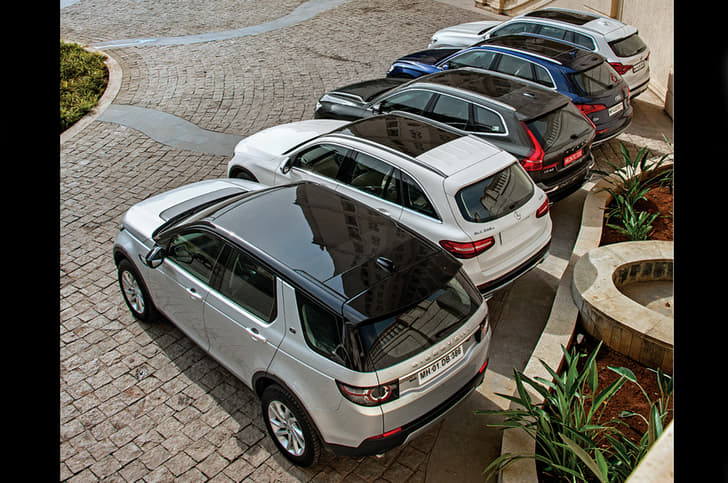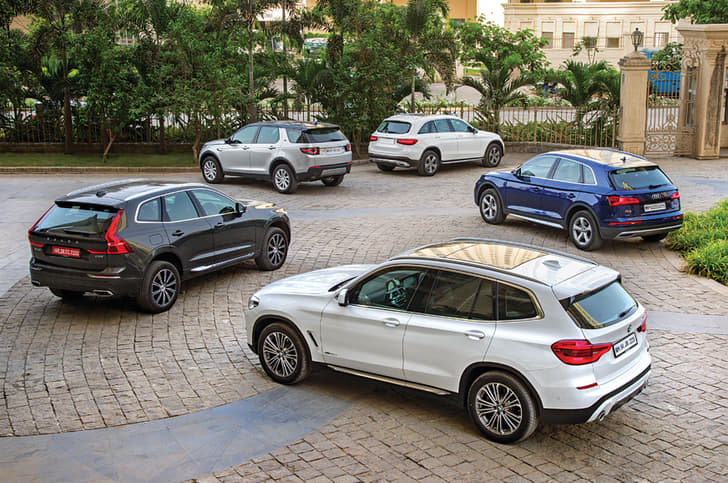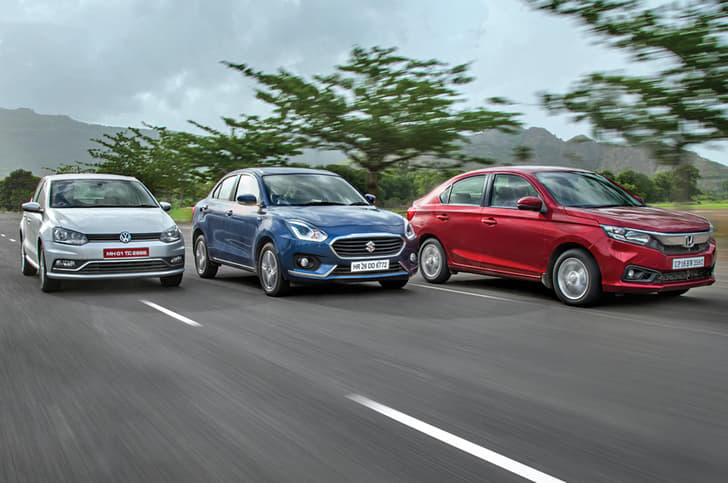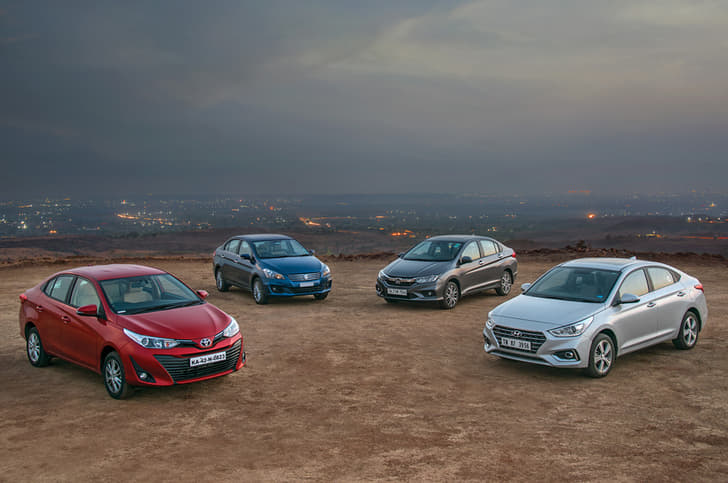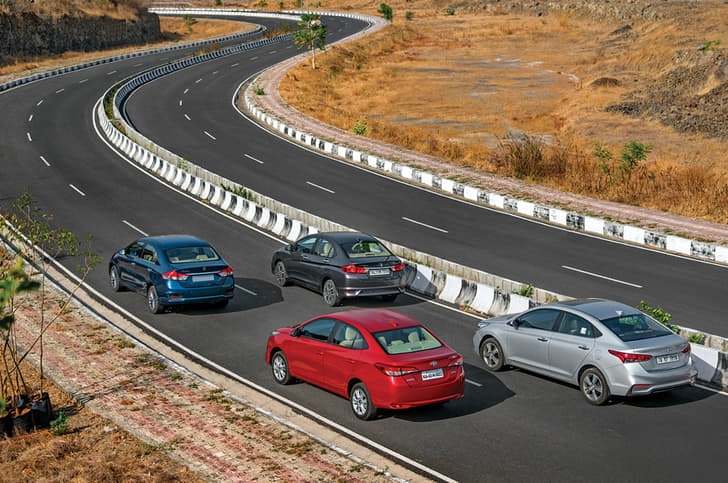Of course, you’ve seen this lot before. The Hyundai i20, Honda Jazz and Maruti Suzuki Baleno have been around for a while now, but there’s a reason we’ve brought them together again. You see, the cars were available in petrol-automatic form but they are now closer on spec and features than ever before. The Jazz, fresh from a mild update, is finally available in fully loaded VX trim on the automatic – a long overdue move that immediately makes the car a much more enticing proposition. Hyundai’s i20, on the other hand, got the more substantial facelift earlier this year but it wasn’t about looks alone. With the update, the i20 also received a CVT for its 1.2-litre petrol engine, a setup you’d find on the other two contenders too. Lower on price and higher on efficiency than the old i20 auto that featured a 1.4-litre and torque converter auto combo, the new i20 auto sure seems to have all the right ingredients. The Baleno auto marches on unchanged but given how well it’s been selling, Maruti is unlikely to be in a rush to enhance it.
These three models should be on the list of probables for anyone looking for a large automatic hatchback. Which one suits the role of a convenient everyday driver is what we’re keen to know.
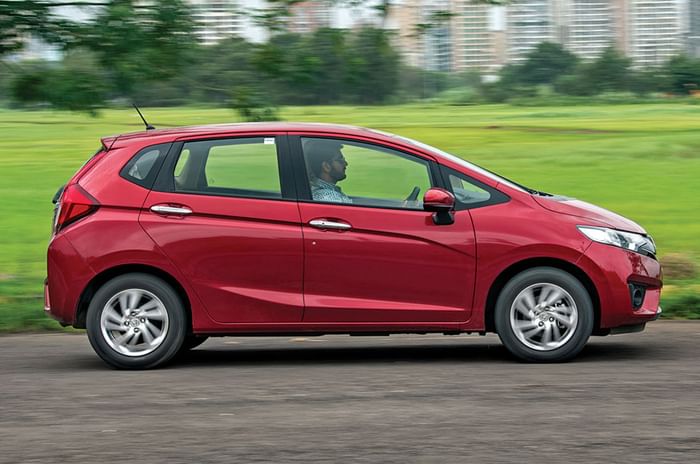
SMOOTH OPERATORS
Let’s get straight to the experience behind the wheel. The Jazz continues with the familiar 1.2-litre i-VTEC petrol engine that makes 90hp and 110Nm, and, just as before, transmission duties are taken care of by a seven-speed CVT. The car has a brisk off-the-line performance and the creep mode works well in stop and go traffic. Progress is smooth at low to medium speeds but treading heavily on the throttle will not translate into big pace. You’ll have to contend with the rubber-band effect CVTs are notorious for too, but it’s not to the point of being bothersome as it can be on the i20, for instance. A cool workaround comes by way of the Jazz’s paddleshifters, which is unique in this trio. The system is quite responsive to manual inputs, and there’s some fun to be had shuffling up and down the seven steps of the CVT. Also on offer is an S mode that keeps the engine on the boil, but frankly you won’t notice any drastic improvement in performance.
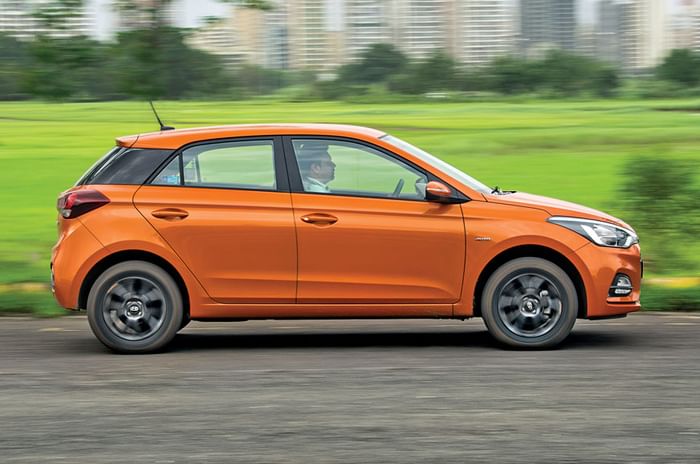
Turn the ignition key (the auto misses out on push-button start) in the i20 and the engine will settle into a quiet and very refined idle. Sadly, the tranquility does not last for long. And that’s to do with the prominent rubber-band effect of the CVT. The gearbox works just fine in slow-moving and smooth-flowing traffic, but at the same time, it is also overly responsive to changes in throttle inputs; even the slightest force on the pedal can have the engine spinning a few hundred rpm faster. As a result, the motor tends to sound strained more often than you’d experience in the other cars. Performance is fine for average city use but the 83hp/115Nm, 1.2-litre petrol engine feels a bit lazy on open roads. You can shift through the six-step CVT via the gear lever, but this is not a car that will excite keen drivers.
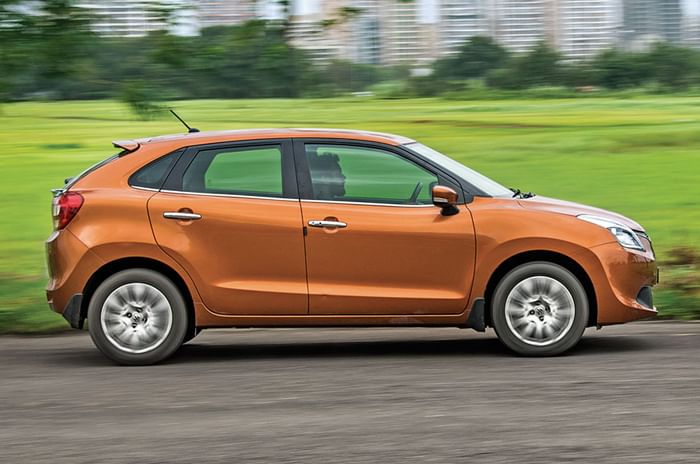
You can’t call the Baleno CVT a thrill machine either, but it sure has the others beat on performance, and how. Its 13.2sec 0-100kph time is considerably quicker than the Jazz’s (14.89sec) and i20’s (15.49sec). More pertinently, it’s also significantly quicker when accelerating from speed – from 20-40kph, 50-70kph, and so on – and genuinely feels the peppiest of the lot. The Baleno does have a considerable weight advantage over the other two, so it can do much more with its 1.2-litre engine’s 84hp and 115Nm of torque. There’s no escaping the rubber-band effect on aggressive throttles, but more often than not, you can get by without pushing too hard. There’s a Sport mode to quicken things up, as well as a L (Low) mode to provide low-end grunt on inclines. What it misses out on is some form of manual ‘gear’ intervention like the other two cars offer.
Aside from the performance, the Baleno further strengthens its case by being the most efficient. The ARAI-certified fuel efficiency of the Baleno is 21.4kpl, that of the Jazz is 19kpl and the i20 returns 17.4kpl.
| Performance | |||
|---|---|---|---|
| Honda Jazz VX CVT | Hyundai i20 CVT Asta | Maruti Suzuki Baleno Alpha (auto) | |
| 0-20kph | 1.75s | 1.54s | 1.50s |
| 0-40kph | 4.28s | 3.65s | 3.50s |
| 0-60kph | 6.97s | 6.35s | 5.95s |
| 0-80kph | 10.33s | 10.12s | 9.08s |
| 0-100kph | 14.89s | 15.49s | 13.20s |
| 0-120kph | 21.29s | 23.78s | 19.10s |
| 20-80kph (in kickdown) | 9.86s | 8.37s | 7.90s |
| 40-100kph (in kickdown) | 12.20s | 11.95s | 9.95s |
MOVERS AND SHAKERS
The Jazz’s ride is pliant and it tackles most undulations with ease. However, the setup is a bit firm; something you’ll feel most on sharper bumps taken at low city speeds. You’ll also have to crane your neck at crossroads and junctions, as the thick A-pillars obstruct your view out. You won’t have any complaints about the Jazz’s steering or handling manners. The steering is decently weighted, handling is agile enough for what is a city car, and, impressively, straight-line stability is quite good so you can venture out on the highway with confidence.

The i20, on the other hand, feels best in town. It has the cushiest low-speed ride, and is also the best insulated from road and tyre noise. The light steering also makes it easy to manoeuvre. Trouble is, the soft suspension and lifeless steering rob you of confidence at highway speeds; you just don’t get that secure feeling of connect in the i20.
The Baleno perhaps strikes the best suspension balance. The ride is relatively soft and the suspension is quiet over potholes, and the Baleno doesn’t move around much at higher speeds either. What takes away from the driving experience, however, is the steering wheel, which completely lacks feedback and has inadequate self-centring.
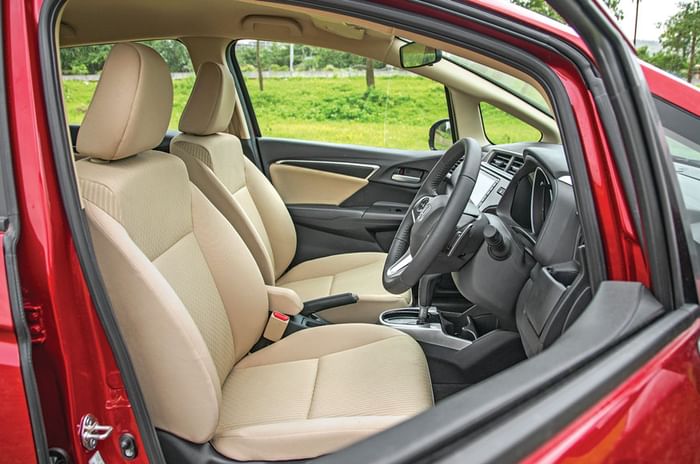
SPACE TRAVEL
Step inside the Jazz and you will notice space is in abundance. The Jazz has been popular for its superlative practicality, and, just as in the earlier model, the facelift boasts plenty of storage space with as many as nine cup/bottle holders (including one under the driver-side AC vent to keep that can of fizzy cool for longer). Plus, the light colours make the cabin look airy and it is quite nicely put together as well. The front seats are large and extremely comfortable, with a lot of bolstering that keeps you snug. And while the introduction of a driver armrest is a nice touch, it’s, however, positioned too low to be of any real use to most drivers. Coming to the rear seat, even with the front seats adjusted for my 6ft 2in frame, there was enough space for three to sit quite comfortably at the back with ample knee-, shoulder- and headroom. However, with the facelift, the Jazz no longer comes with the versatile (read: split/fold/split) ‘magic seats’ that could also extend to form a lounge chair, and the adjustable head rest has also been done away with, which is a bummer.
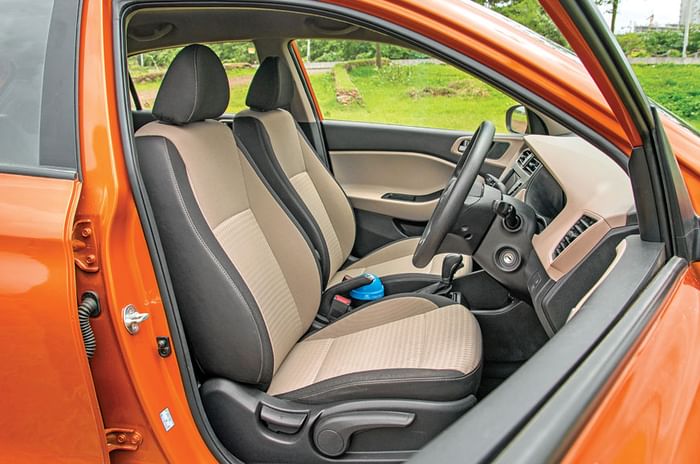
The Baleno offers comfortable seating at the front with large seats, and adequate all-round visibility. What’s really remarkable is the sheer amount of space at the back; it even betters the Jazz on knee room while offering comfortable seating for three. The Baleno is also the only model from the trio to feature adjustable headrests, but the headroom is tight for tall passengers. The all-black theme of the cabin can seem gloomy, and, in general, the Baleno doesn’t impress for cabin quality; the hard plastics and monotone cabin aren’t in keeping with the car’s price.
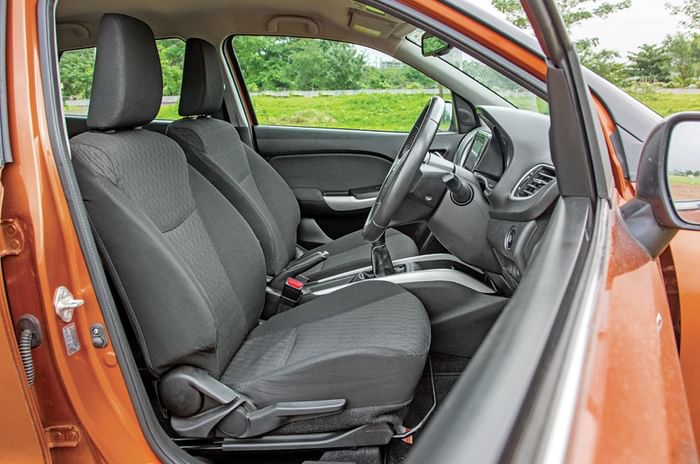
The Hyundai i20 maintains its edge in terms of cabin quality, and feels the most premium on the inside. But once you’ve sat in the other two cars, what also sticks out is that the Hyundai feels a size smaller; it is significantly down on space at the rear, compared to the other two. While two average-sized adults will sit in comfort, three will be a crowd. Besides, the rising window line also eats into the sense of space at the back. It also loses out on the adjustable rear seat headrests, offered in the fully loaded model, not on offer on the auto. However, those at the back will welcome the rear AC vents that both the Jazz and Baleno lose out on.
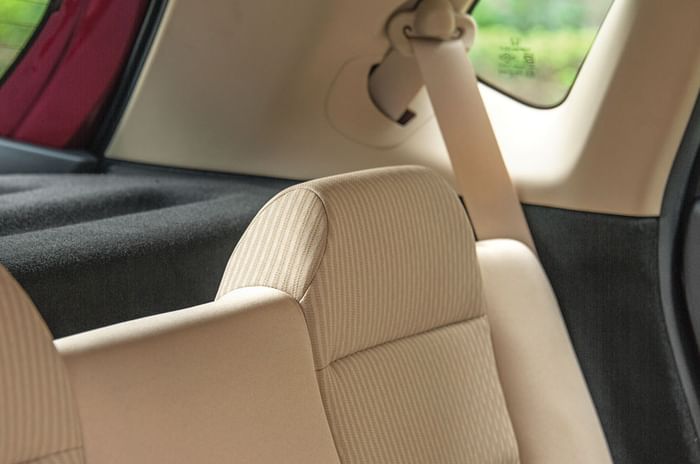
At 354 litres, the Jazz has the largest boot here. It is also the easiest to load into and has the best shape giving the most flexibility in terms of how you can place your luggage. The Baleno comes in second with 339 litres, while the i20 is at 285 litres. Only the Baleno auto offers 60:40 split folding rear seats that come in handy when you need to load in more luggage than usual.
| Technical specifications | |||
|---|---|---|---|
| Honda Jazz VX CVT | Hyundai i20 CVT Asta | Maruti Suzuki Baleno Alpha (auto) | |
| Length | 3955mm | 3985mm | 3995mm |
| Width | 1694mm | 1734mm | 1745mm |
| Height | 1544mm | 1505mm | 1510mm |
| Wheelbase | 2530mm | 2570mm | 2520mm |
| Kerb weight | 1066kg | 1093kg | 935kg |
| Engine | 4 cyl, 1199cc, petrol | 4 cyl, 1197cc, petrol | 4 cyl, 1197cc, petrol |
| Power | 90hp at 6000rpm | 83hp at 6000rpm | 84hp at 6000rpm |
| Torque | 110Nm at 4800rpm | 115Nm at 4000rpm | 115Nm at 4000rpm |
| Gearbox | CVT | CVT | CVT |
INSPECTOR GADGET
The absence of a top-spec trim for the automatic Jazz was a deal breaker for many buyers in the past. But things have changed now with the introduction of the VX. The big inclusion on the VX is Honda’s latest Digipad 2.0 touchscreen infotainment system. The 7.0-inch touchscreen-based system comes with navigation, Android Auto and Apple Carplay, and is also customisable for layout. The new setup looks neat, the graphics are crisp, and the touch function works smoothly. Other new additions include chrome door handles, driver and co-driver vanity mirrors, while on the outside there are new LED wing lights. Sorry to bring this up again, but the magic seats would have been the icing on the cake.
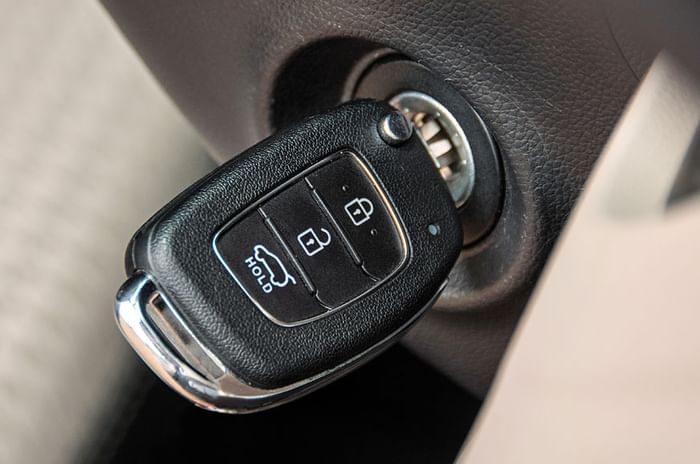
Hyundai is known for packing its cars with features so the i20 auto comes across as a bit of an anomaly. Unlike the Jazz and Baleno, the i20 CVT isn’t available as a fully loaded variant, or Asta (O) in Hyundai’s case, and only comes in the Asta trim. As a result, it misses out on projector headlamps, push-button start, a rear wash/wiper and even Hyundai’s AutoLink app connectivity. It’s not what you’d call bare-bones either. Daytime running LEDs, a 7.0-inch touchscreen with Apple CarPlay, Android Auto, MirrorLink and voice recognition, and a rear-view camera are part of the kit.
Maruti offers the Baleno automatic in three trims, including the full-spec Alpha form. Equipment on offered includes daytime running LEDs, projector headlamps and UV-cut glass. Users also get a 7.0-inch SmartPlay touchscreen infotainment system that is easy to use and comes with USB, aux, Bluetooth and satnav.
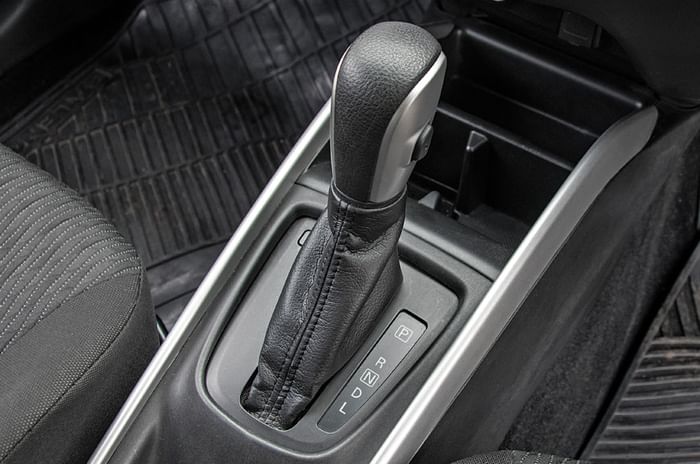
In terms of safety features, all three cars come equipped with dual airbags, rear-view cameras and rear parking sensors. However, the Baleno is the only car to get Isofix for child seats at the rear as well as an auto-dimming internal rear-view mirror.
| Equipment list | |||
|---|---|---|---|
| Honda Jazz VX CVT | Hyundai i20 CVT Asta | Maruti Suzuki Baleno Alpha (auto) | |
| Automatic headlamps | NA | NA | Yes |
| Projector headlamps | NA | NA | Yes |
| Rear parking sensors | Yes | Yes | Yes |
| Push button start | Yes | NA | Yes |
| Touchscreen infotainment system | Yes | Yes | Yes |
| Apple CarPlay/Android Auto | Yes | Yes | Yes |
| Cruise control | Yes | NA | NA |
| Reversing camera | Yes | Yes | Yes |
| Rear AC vents | NA | Yes | NA |
| Paddleshifters | Yes | NA | NA |
| Rear wiper and washer | Yes | NA | Yes |
| Adjustable rear headrest | NA | NA | Yes |
| Airbags | 2 | 2 | 2 |
| Price (ex-showroom, Delhi) | Rs 8.99 lakh | Rs 8.22 lakh | Rs 8.43 lakh |
WINNER, WINNER
The Hyundai i20 facelift (Rs 8.22 lakh) has its strengths in its quality interiors and comfortable low-speed ride. But as a package, the i20 CVT doesn’t quite come together as well as its manual siblings. Performance is okay and you’ll have to make your peace with the CVT’s characteristics. That the Hyundai also misses a few features makes it harder to recommend it readily.
It’s a far closer contest between the Honda Jazz and Maruti Baleno. The Jazz has the nicer interior, it’s pleasant to drive, and is a very likeable car overall. However, priced at Rs 8.99 lakh, the fully loaded Jazz VX is a touch too pricey. You do get paddleshifters and a superior infotainment system, and budget no constraint, this is the car we’d recommend.

That said, you can’t overlook the Baleno that’s around Rs 56,000 cheaper and gets a bit more by way of features. It is also the peppier car and more fuel efficient, and, for what it’s worth, it also promises a more premium buying experience thanks to the Nexa dealerships.
Factor in everything and it’s the Baleno that takes your rupee further and gives you more car for the money. For most, that’s reason enough to go for the Maruti.

